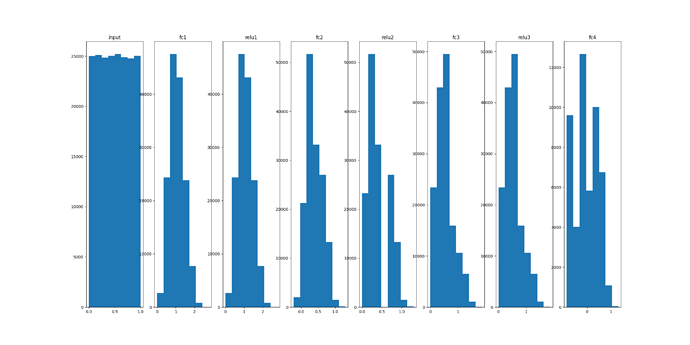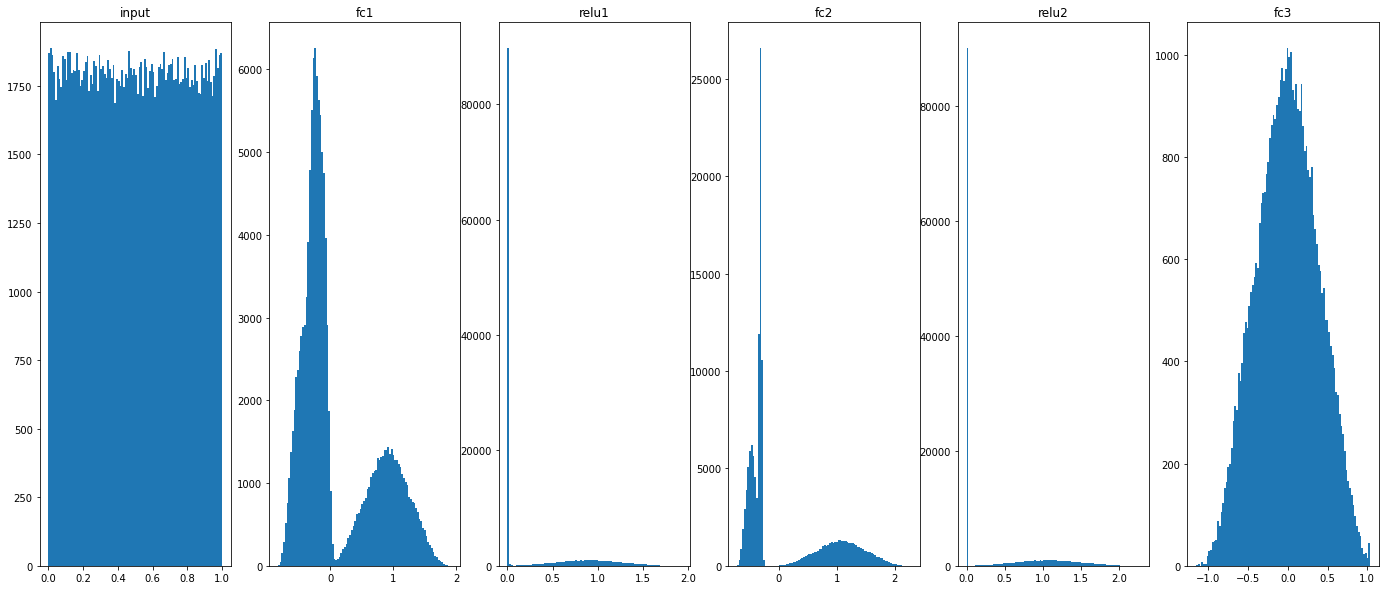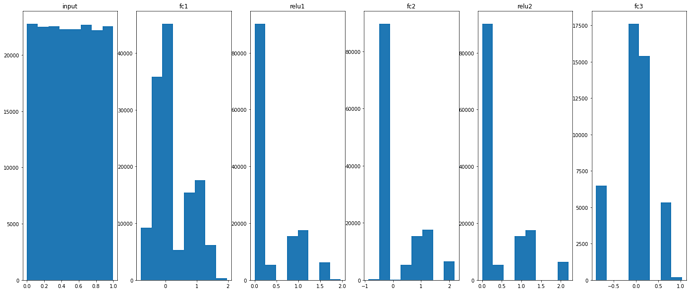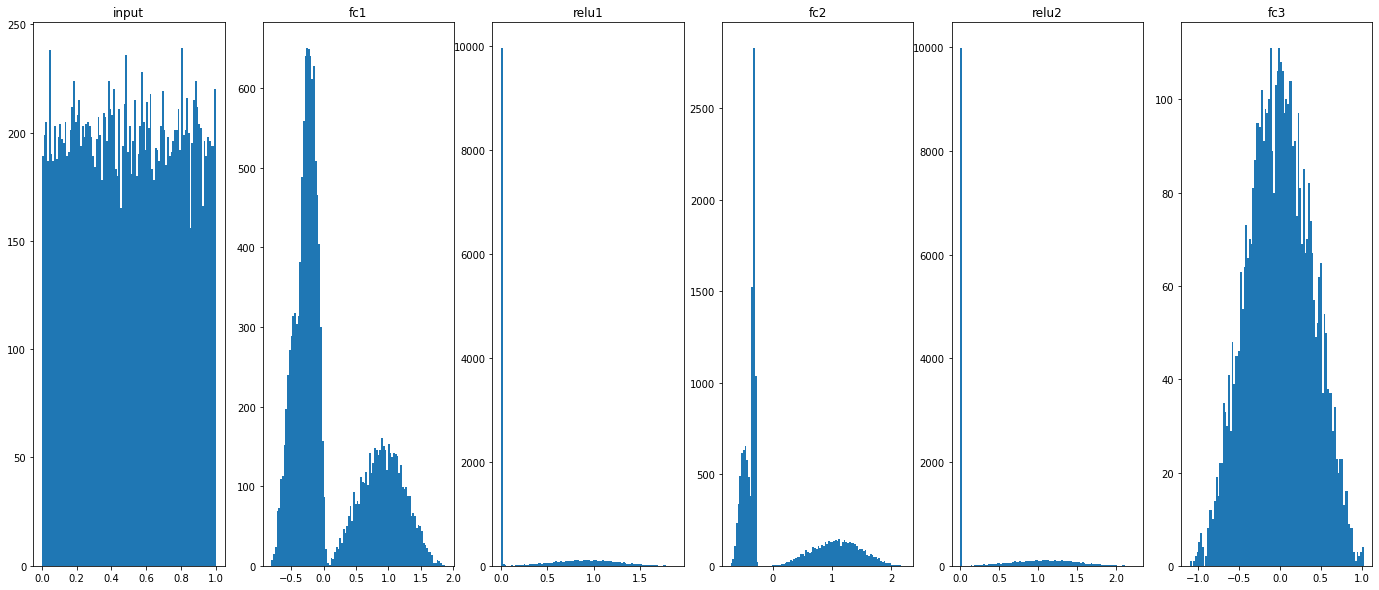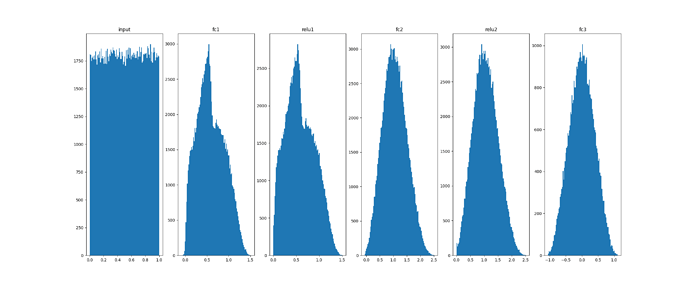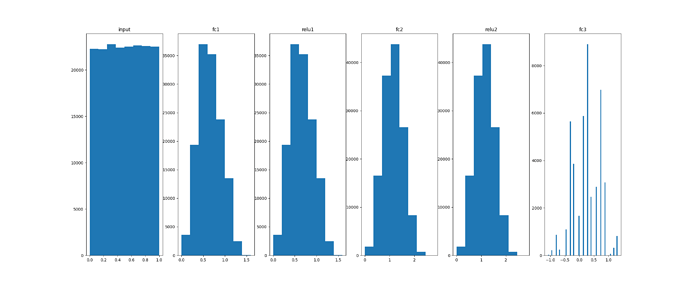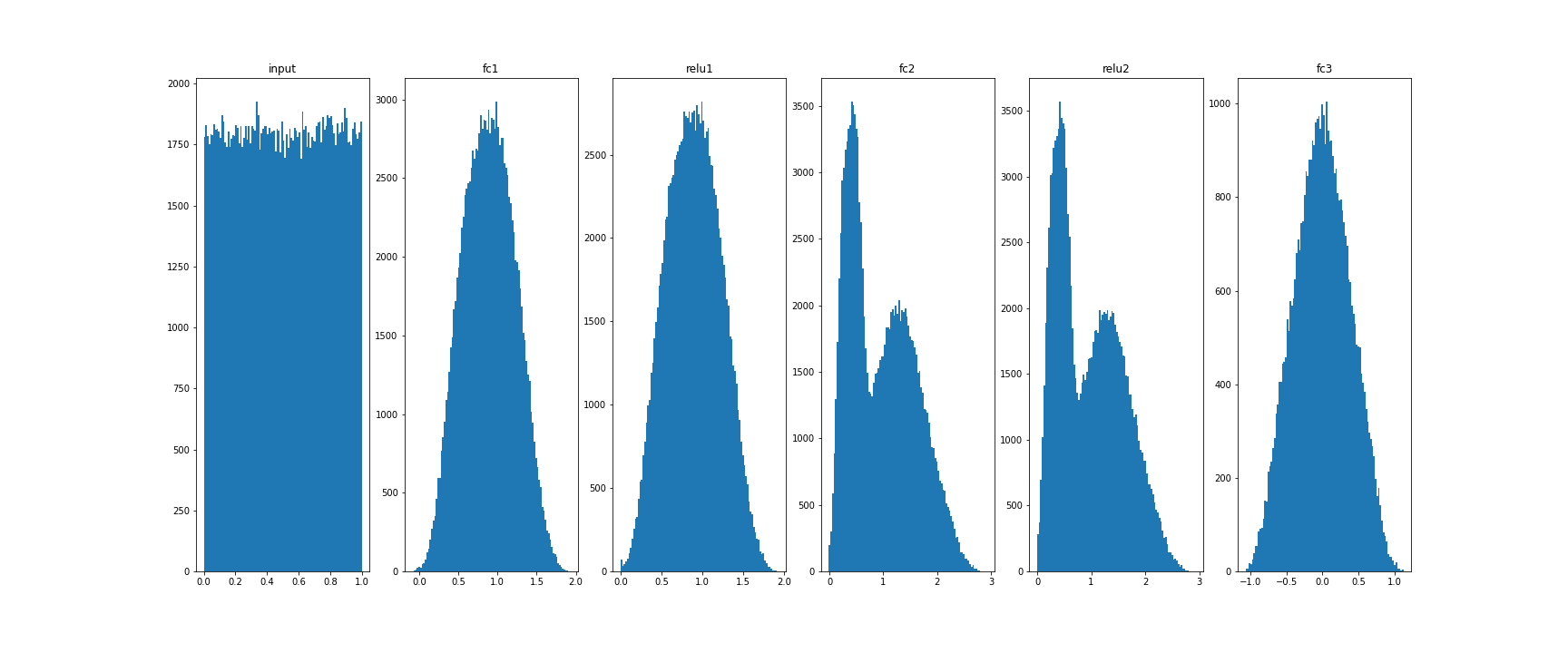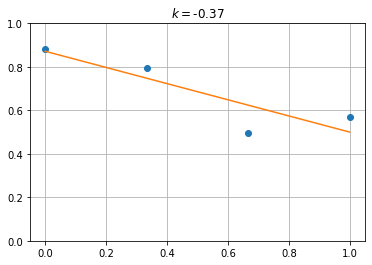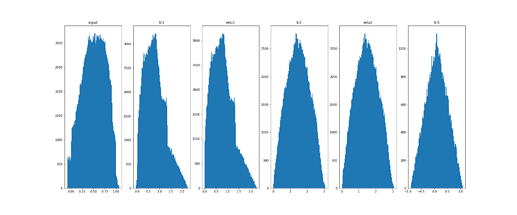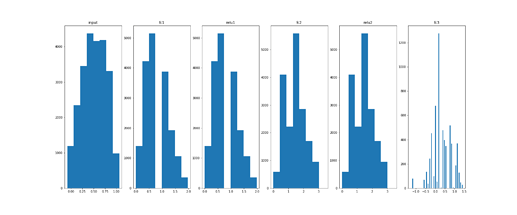Thanks Andrei,
yes you are right, I used compile_torch_model with n_bits=3.
Histograms:
Training data (45k)
Test data (5k)
Code:
from torch import nn
import torch
import numpy as np
import matplotlib.pyplot as plt
1. Generate the data
def LR_slope(y):
X = np.linspace(0,1,len(y))
k,d = np.polyfit(X,y,1)
return [k]
# synthetic training data
l = 50000 # data set length
N = 4 # number of inputs
X = np.array([np.random.uniform(0,1,N) for _ in range(l)])
Y = np.array([LR_slope(x) for x in X])
from sklearn.model_selection import train_test_split
X_train, X_test, y_train, y_test = train_test_split(X, Y, test_size=0.1, random_state=42)
X_train = torch.tensor(X_train).float()
X_test = torch.tensor(X_test).float()
y_train = torch.tensor(y_train).float()
y_test = torch.tensor(y_test).float()
2. Define the model
class MyNet(torch.nn.Module):
def __init__(self, input_size):
super().__init__()
self.fc1 = nn.Linear(input_size, 3)
self.relu1 = nn.ReLU6()
self.fc2 = nn.Linear(3, 3)
self.relu2 = nn.ReLU6()
self.fc3 = nn.Linear(3, 1)
for m in self.modules():
if isinstance(m, nn.Linear):
torch.nn.init.uniform_(m.weight)
torch.nn.init.zeros_(m.bias)
self.activations = {}
self.track_activations = False
def set_track_activations(self, enable):
self.track_activations = enable
if enable: #reset
self.activations = {}
for n, m in self.named_modules(): #in order traversal
if isinstance(m, nn.Linear):
self.activations[n] = np.zeros( (0, m.weight.shape[0]), np.float32)
last_neurons = m.weight.shape[0]
elif isinstance(m, nn.ReLU6):
self.activations[n] = np.zeros( (0, last_neurons), np.float32)
def forward(self, x):
for n, m in self.named_children(): # in order traversal
x = m(x)
if self.track_activations:
self.activations[n] = np.vstack( (self.activations[n], x.detach().numpy() ))
return x
def train():
for epoch in range(epochs):
# Get a random batch of training data
idx = torch.randperm(X_train.size()[0])
X_batch = X_train[idx][:batch_size]
y_batch = y_train[idx][:batch_size]
# Forward pass
y_pred = model(X_batch)
# Compute loss
loss = criterion(y_pred, y_batch)
# Backward pass
optimizer.zero_grad()
loss.backward()
# Update weights
optimizer.step()
if (epoch+1) % 5000 == 0:
# Print epoch number, loss
print(f'Epoch: {epoch+1:5} | Loss: {loss.item():.9f}')
if loss.item() < 1e-9:
break
print("Training done")
3. Initialize and train the model
# Initialize our model
model = MyNet(X.shape[1])
# Define our loss function
criterion = nn.MSELoss()
# Define our optimizer
optimizer = torch.optim.SGD(model.parameters(), lr=0.1)
# Define the number of iterations
epochs = 40000
# Define the batch size
batch_size = 16
train()
4. fp32 evaluation
y_pred = model(X_test)
print(f"mean error: {(y_pred - y_test).abs().mean()}")
y_test_numpy = y_test.numpy()
plt.plot(y_test_numpy, y_pred.cpu().detach().numpy(), "o", markersize=1)
plt.grid()
plt.xlabel("expected result y_test")
plt.ylabel("actual result y_pred")
plt.show()
X_eval = X_train.numpy()
# X_eval = X_test.numpy()
n_batches = X_eval.shape[0] // batch_size
model.eval()
model.set_track_activations(True)
for bi in range(n_batches):
data = torch.from_numpy(X_eval[bi*batch_size:(bi+1)*batch_size, :].astype(np.float32))
model(data)
model.set_track_activations(False)
_, ax = plt.subplots(1,6,figsize=(24,10))
ax[0].hist(X_eval.flatten(), 100)
ax[0].set_title("input")
for idx, key in enumerate(model.activations):
ax[idx+1].hist(model.activations[key].flatten(), 100)
ax[idx+1].set_title(key)
plt.show()
plt.savefig("distrib_w_fp32.png")
5. concrete: quantization
from concrete.quantization import QuantizedArray, PostTrainingAffineQuantization
from concrete.torch import NumpyModule
# Create corresponding numpy model
numpy_model = NumpyModule(model)
# Quantize with post-training static method, to have a model with integer weights
post_training_quant = PostTrainingAffineQuantization(3, numpy_model, is_signed=True)
quantized_module = post_training_quant.quantize_module(X_eval)
# Quantize input
q_x = QuantizedArray(3, X_eval)
q_input = q_x
q_act = {}
for layer_name, layer in quantized_module.quant_layers_dict.items():
q_x = layer(q_x)
q_act[layer_name] = q_x
_, ax = plt.subplots(1,6,figsize=(24,10))
ax[0].hist(q_input.values.flatten(), 8)
ax[0].set_title("input")
for idx, key in enumerate(q_act):
ax[idx+1].hist(q_act[key].values.flatten(), 8)
ax[idx+1].set_title(key)
plt.savefig("distrib_w_int3.png")
Regards
(sorry about the last reply, my stupid fault)




